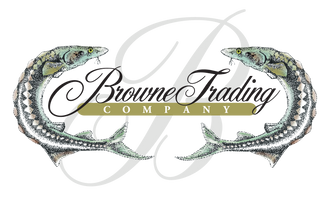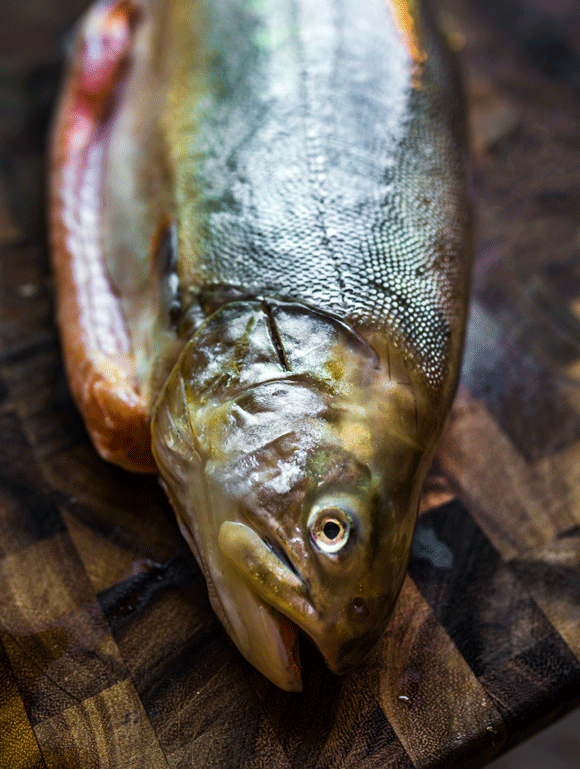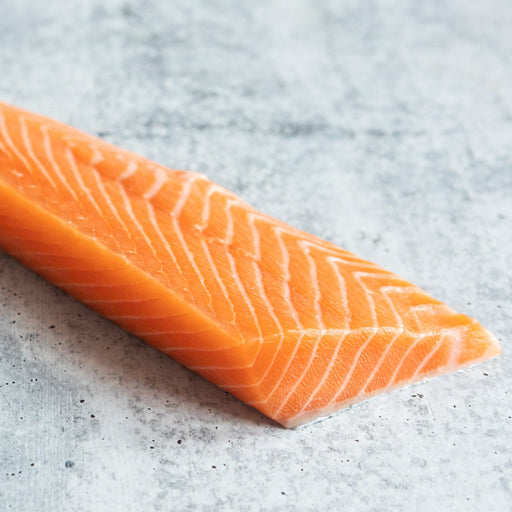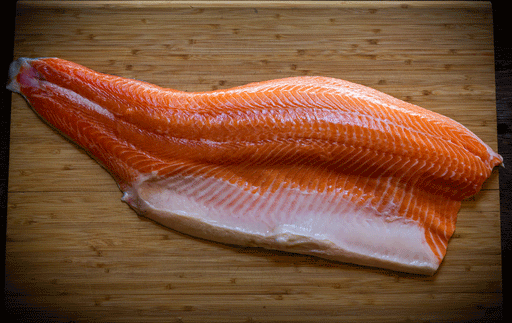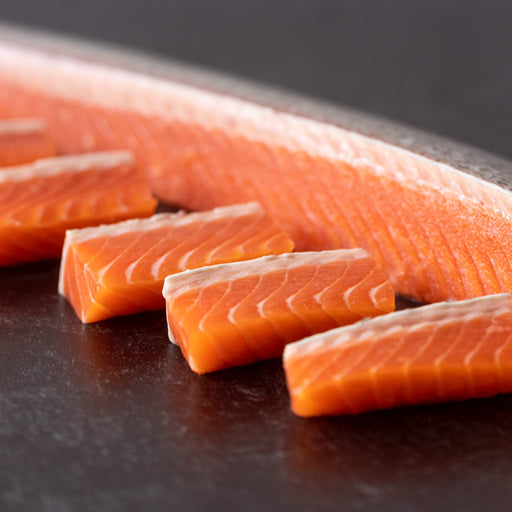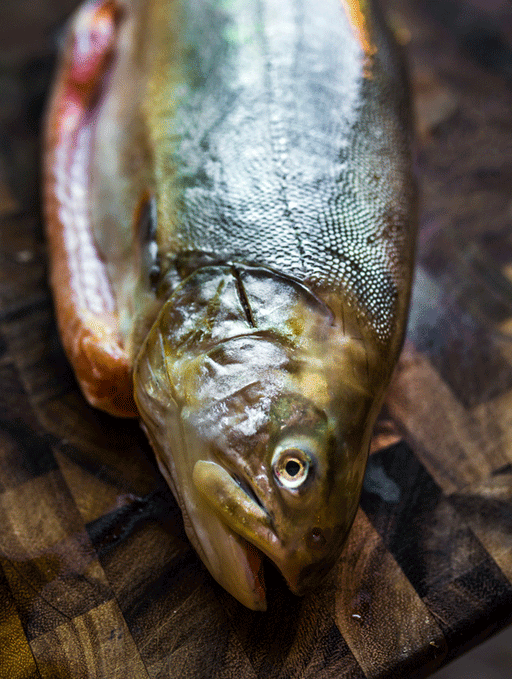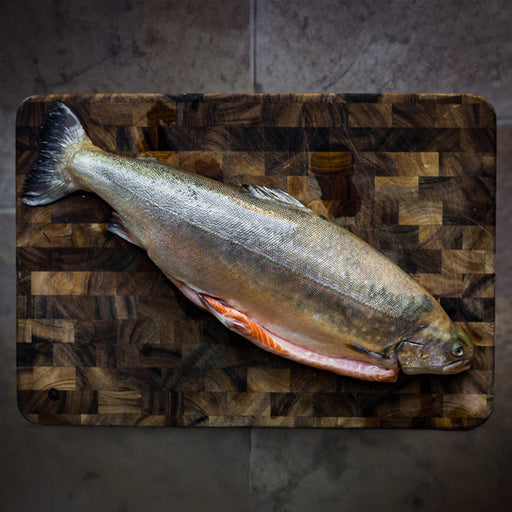ARCTIC CHAR IS A SALMONID widely found throughout the North Atlantic and as far north as Newfoundland and Iceland. The icy Pacific waters near Alaska (where char is a popular sportfish) are also rich with this fish, which happens to be a close relative of the sea-going brook trout or Dolly Varden. In fact, the biological differences between the two species are mainly cosmetic, (i.e., the color and size of the scales.) Arctic char is also more commonly known as the northern cousin of the salmon.
The versatile Arctic Char has rapidly graduated from its modest heritage as a sportfish onto finer dining menus. Long enjoyed by the Inuits and by Canadians alike, this fish is gaining acceptance as an entree at more elegant affairs. It was served to the Queen of England herself upon visiting our Canadian neighbors to the north, and it was the fish of choice for the first White House state dinner during the Clinton years. High society for a fish once eaten “popsicle style” by the Inuit.
Char’s popularity stems from the fact that it appeals to the diner who enjoys trout but is not as fond of the more powerful flavor of salmon. The flaky-to-firm flesh, which can be either pink or white, should be treated like that of the salmon or sea trout: baked or poached, grilled, or stuffed and baked. Take caution not to mask its flavor with excessive garnishes or sauces. Browne Trading Co. imports sea-cultivated Arctic Char from Iceland. These fish have nice fat lines, yield about three-quarters of its weight in meat content, and typically have a long shelf life. It is recommended that the skin is removed after cooking as it can turn leathery when put to heat. Whole, the char weighs approximately 4-6 pounds; it is also available as fillets.
Catch Region: Iceland
Seasonality: Year Round
Catch Method: Farmed
Yield (Fillet Percentage): 75%
Flavor Profile: Pronounced, mild, clean
Texture Profile: Medium Firm
Substitute:
